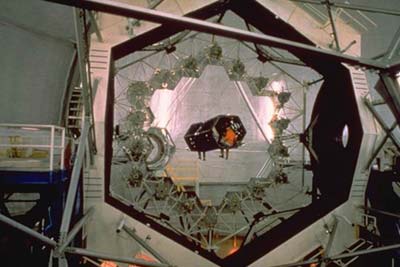
A Nearby Star’s Hidden Melody Uncovers a Cosmic Riddle
Astronomers have focused on a far-off star’s delicate vibrations—and what they discovered could significantly alter our comprehension of the evolution of stars and their planetary systems over extensive cosmic periods. Data collected with advanced technology on the summit of Maunakea in Hawaii have revealed remarkable new insights about an aging, nearby star. These pioneering results not only contest our existing models of stellar physics but also hold the potential to transform how researchers ascribe ages to stars and their orbiting planets.
Tuning into the Harmony of Stars
Just as musical instruments emit distinct tones, stars inherently vibrate in patterns related to their inner structure. These stellar oscillations—essentially “sound waves” resonating within the star—convey valuable information about the star’s dimensions, mass, and age. The discipline that focuses on interpreting these oscillations is referred to as asteroseismology.
In an unprecedented achievement, astronomers utilized the highly sensitive Keck Planet Finder (KPF), stationed at W. M. Keck Observatory, to observe the minute surface pulsations of a star located nearly 21 light-years away from Earth. The selected star: HD 219134, a relatively cool and tranquil orange dwarf star known to possess a planetary system.
“You can imagine a star’s oscillations as its distinct melody,” explained Dr. Yaguang Li, the study’s lead author and a researcher at the University of Hawaii at Mānoa. “By deciphering that melody, we can accurately assess its age and structure—including hints about the orbiting planets.”
Capturing Tiny Movements
The task was immensely challenging. HD 219134’s vibrations are exceptionally subtle; the star’s surface shifts at a rate of less than 5 centimeters per second—approximately the pace of a leisurely snail. Yet, over four successive nights and more than 2,000 precise spectrographic measurements, the Keck team effectively recorded these faint whispers of stellar activity.
To translate these oscillations into a format accessible to human perception, researchers compressed the data to produce a sound clip, converting the star’s pulsations into an audible tone. In this accelerated simulation, HD 219134’s sonic signature provides insight into the internal conditions of the star—much like employing a stethoscope to listen to stellar hearts pulsing millions of years away.
An Ancient Star at Its Peak
From this cosmic concerto, researchers unearthed astonishing discoveries. HD 219134 is approximately 10.2 billion years old—more than double the age of our Sun—and is still fusing hydrogen in its core, placing it in the “main sequence” category. This revelation makes it one of the oldest confirmed active stars through asteroseismology.
Gaining insight into such ancient stars is vital as they act as timekeepers for galactic evolution. The physical processes behind a star’s aging—such as changes in rotation and internal fusion—are essential for models utilized throughout astronomy, ranging from galactic formation timelines to estimating when life could have arisen on orbiting exoplanets.
Unusual Findings Beneath the Surface
Despite its low activity, HD 219134 revealed an unexpected twist: it appeared about 4% smaller than what prior interferometric measurements indicated (another highly accurate stellar measurement technique). This surprising deviation suggests deeper enigmas within stellar physics—especially for cooler, orange-colored stars like this one.
Additional mysteries arose from analyzing the star’s acoustic “signature.” The vibration patterns differed from those identified in Sun-like stars, indicating that the internal structure of HD 219134 may be significantly different. Could magnetic fields, often overlooked in certain modeling scenarios, be affecting its acoustic characteristics? Or are there unidentified physical mechanisms that cause stars to slightly shrink with age?
These discrepancies are prompting astrophysicists to review and potentially revise long-held theories on stellar composition and evolution.
Notable Discoveries and Their Implications:
– Asteroseismic data indicates that HD 219134 is approximately 10.2 billion years old.
– The star’s vibrational profile suggests it may be slightly smaller than previously believed—raising queries regarding cooling, contraction, or measurement limits.
– Its acoustic attributes diverge from solar analogs, suggesting previously unrecognized structural variations in similar stars.
– The system is home to at least five known planets, two of which are rocky super-Earths that might possess Earth-like compositions.
Influences on Exoplanet Discovery and Habitability
The implications of this research resonate beyond the realm of stars. Knowing the precise size and brightness of a host star directly influences how astronomers estimate the properties of its orbiting planets—mass, density, and potentially, habitability.
For HD 219134’s two rocky planets, accurate assessments of the parent star have equipped scientists with a clearer understanding of planetary structure, reinforcing the likelihood that these worlds feature solid, Earth-like terrains.
“When we finally detect signs of life on a distant planet,” remarked co